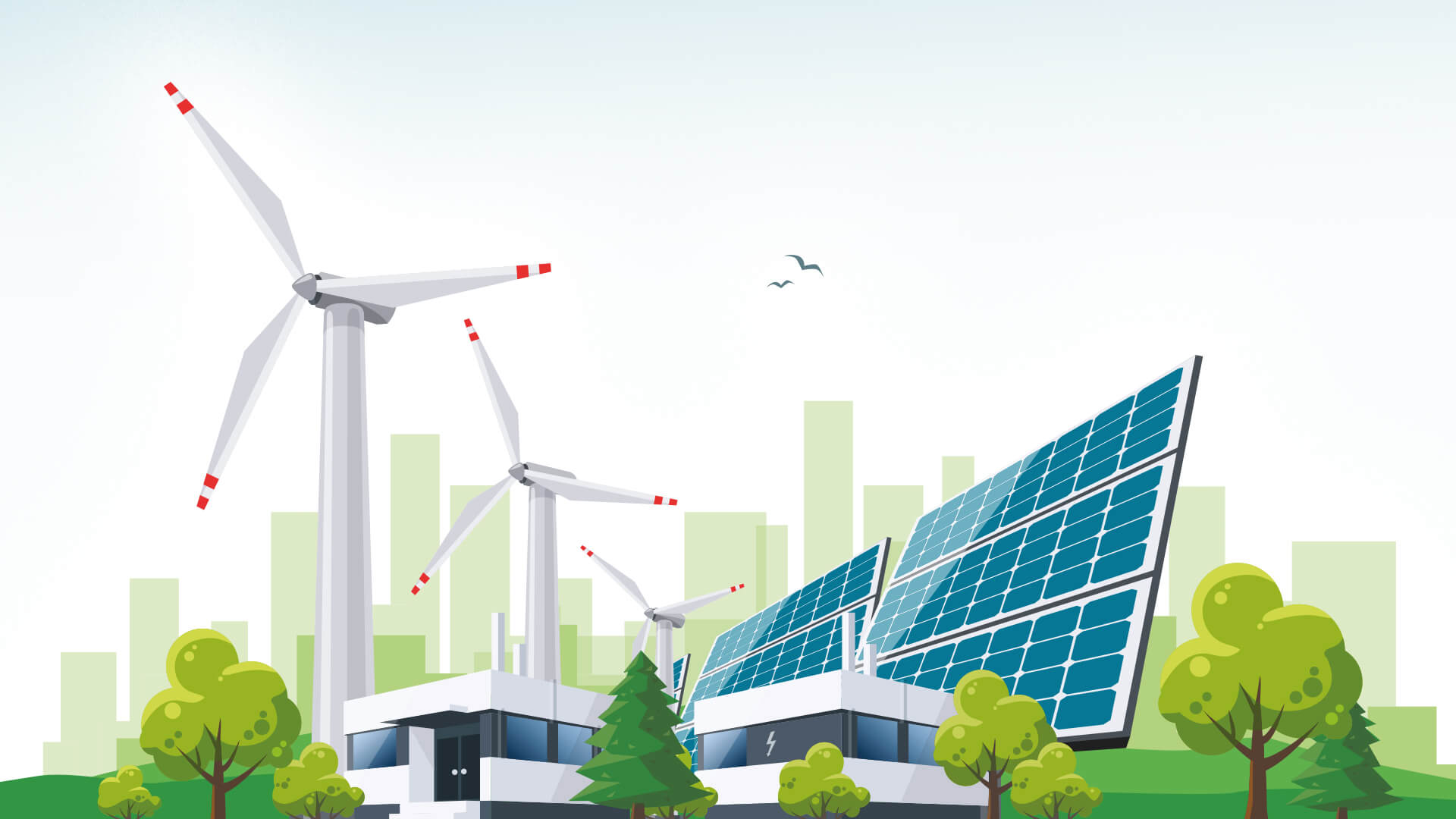Build back better
Six months after the World Health Organisation declared a pandemic, it seems many of us are searching for a bit of cheer. In the UK, department store John Lewis opened its Christmas shop in August, weeks earlier than usual, after a spike in online searches by customers. Sales of Christmas trees are up 233% compared with the end of summer last year1.
Rather than resort to tinsel and glittery baubles just yet, we have been taking comfort (from an investment perspective at least) from the way our companies continue to make positive contributions at such a challenging time. Unilever reported that sales of its hand sanitiser increased by 20,000% and the company has switched from two manufacturing sites to 60 in a matter of weeks2. LabCorp was the first company in the US to receive regulatory approval for an at-home Covid-19 test3 while Experian has made many of its interactive tools available to governments and charities for free to help them identify those most affected financially by the pandemic4.
Given our bottom-up investment approach, our preoccupation with companies will come as no surprise and it is through this lens that we have been viewing the growing debate about whether we are heading for a period of deflation or inflation. This debate is, of course, as old as the sky but the pandemic has intensified it. We have listened to both sides of the argument and continue to believe that the long-term trends of rising debt, ageing populations, advancing technology, falling energy prices and innovation are deflationary. In contrast, other trends, such as the reshoring of supply chains to the West and potential food shortages, could create inflationary pressure. And now there is a further potential source of inflation: governments around the world are introducing unprecedented fiscal packages in response to the economic crisis to avoid a severe deflationary shock, thus increasing the risk of ‘policy overshoot’ which could lead to inflation.
These are tail risk events, worth hedging against, but they are not driving our investment process. We have never focused on making macroeconomic or policy predictions – these are almost impossible tasks particularly in the current climate. Instead, we have remained focused on what this all means for our companies: what are the implications for the long-term sustainability of their business models and how are they adapting to the challenges?
There’s no place like home
Over the past few decades, American and European companies offshoring manufacturing to cheaper locations, such as China, has been one of the greatest deflationary pressures. But as we have discussed before, there are signs this trend is maturing and may even be reversing. At the end of 2019 when international travel was still a breeze, one of our investment partners, Terry Coles, spent a week meeting senior executives from companies based on the East Coast of the US. Across a range of sectors, from retail to industry and healthcare, many were already talking about bringing their manufacturing and supply chains closer to home, long before the global pandemic was on the horizon. Increasing environmental regulation, greater protectionism, rising labour costs abroad and the US-China trade war were all weakening the appeal of ever more globalisation.
Such dramatic reorganisations inevitably lead to winners and losers. Providers of US domestic infrastructure, like Amphenol in communication networks or Xylem in water infrastructure, could be amongst the biggest beneficiaries. But onshoring is not cheap: one study estimates that, over the next five years, the cost for US firms looking to re-shore operations from China will be over $1 trillion in aggregate5. Without much greater use of technology, prices of goods will have to rise and there is no guarantee that consumers will be willing to pay more to “buy American” or “buy European”. Automation can not only help to cut these costs but its potential to transform business models and improve customer satisfaction is colossal, be it through productivity gains, enabling mass customisation or reducing product errors. Avery Dennison’s RFID technology (radio frequency identification) will have a key role to play in tracking products through more automated systems.
Man versus machine revisited
The big fear for many is that, in this new world of automation, humans will be the big losers as machines replace workers, job opportunities shrink, and wages fall. It has already been a tough year for the labour market. Many companies have made great efforts to protect employees during the pandemic (Mastercard CEO Ajay Banga said “rule number one, two and three is to take care of your employees first”6) but the toll it has taken overall has been immense. At the end of September, a further one million British workers stood to lose their jobs7, and many believe automation has the potential to exacerbate inequality further as manual jobs will be the easiest to replace. But before those of us with office jobs get too comfortable, it seems no occupation is safe: robot GPT-3 wrote an entire article for the Guardian newspaper last month7. We struggle to see how, in such an environment, there is any chance of wage inflation.
Humans will still be needed of course to programme computers and oversee processes, but the worry is that the workforce will lack the skills needed for the roles created. This was the motivating force for the Luddite movement 200 years ago which, contrary to popular belief, wasn’t objecting to technological progress. Its followers just wanted to ensure that workers were treated fairly and still had opportunities to earn a decent wage9. Making sure that is the case this time around will require a significant rethink of education and training and is likely to need government input. Help could come from other sources too: we envisage some industries, such as the clean energy industry, will be crying out for new talent in the coming years, giving workers an opportunity to reskill.
Building back better
One analyst notes that “governments consider environmentally positive investments to be the correct (and vote winning) way to grow out of this recession”10.
While that sounds slightly cynical, it’s true that many governments have some sort of “build back better” strategy in their Covid-19 recovery plans. Innovation in the energy industry has enabled this and provided another source of deflationary pressure through the falling costs of renewable energy and battery storage capabilities. Over the last ten years, the cost of solar power has fallen a staggering 82% and generating electricity from solar photovoltaic cells or onshore wind farms is now cheaper than generating it from fossil fuels11.
There is still much to do to update infrastructure to make it suitable for this new world. This is an important part of our Wire and Rewire investment theme and could be the basis for many employment opportunities, particularly as governments continue to develop greener policies – China has recently announced that it will reach net zero emissions by 2060. Such changes also present opportunities for some of our companies. Infineon Technologies manufactures the semiconductors that will be needed in both electric vehicles and throughout renewable energy infrastructure. Thermo Fisher Scientific’s technology is not only used in life sciences and semiconductor manufacturing but is also critical to the production of lithium ion batteries needed for energy storage – a reminder that traditional sector classifications don’t always reflect the full range of business opportunities for companies today.
Necessity is the mother of invention
Innovation in clean energy continues apace. Witness the first test flight of a hydrogen-fuelled plane and the company that is repurposing disused mine shafts in Scotland to store renewable energy12. Another area where innovation has the potential to counteract inflationary forces is in the food industry. Food demand is expected to grow 30% by 2050 driven by global population growth and expanding middle classes, but studies suggest that it is not possible to increase production of traditional food crops enough to ensure food security for everyone13. The increasing frequency of extreme weather events could also lead to shortages and price rises that push basic goods out of reach of much of the world’s population. Kerry’s ‘Future Foods’ initiatives are exploring ways to address this, for example, through the development of cheaper and more sustainable alternatives to meat proteins. Meanwhile, vertical farming is going from strength to strength: it can grow a head of lettuce in 5.5 days versus 90 days in a field14.
There are undoubtedly challenging times ahead, regardless of whether ‘team deflation’ or ‘team inflation’ are proved right. This is why we remain focused on seeking out companies which stand to benefit from long-term structural trends in order to protect and grow our clients’ assets. And we are optimistic that through continuing innovation, businesses will help to find sustainable solutions to some of today’s greatest problems. As American baseball player Yogi Berra famously said: “the future ain’t what it used to be”. We think that when all of this is finally over, it might turn out to be better.
Spotlight:
Transparency is the currency of trust8
Transparency is central to everything we do, from our investment process to our communications, fees and business structure.
Successful investment management over the long term relies on good judgement. We believe the judgement of a team is greatly improved when a culture of trust and openness encourages debate and welcomes new ideas from diverse perspectives. Investment decisions are taken together so everyone fully understands the reasons behind them. The result is clear and transparent portfolios, so our clients know exactly what they hold and the reasons why.
Veritas is not alone in recognising the value of trust and openness. For many companies, transparency presents a business opportunity. In one survey, 94% of consumers ranked transparency as the most important factor in brand loyalty2 and as sustainability moves up the agenda, transparency is no longer an optional extra. It is therefore no surprise that much of our engagement work focuses on encouraging clear and consistent disclosure by investee companies. One leading the pack is Unilever, which is using drone technology and big data to make its palm oil supply chain more transparent – crucial if it is to meet its target of deforestation-free supply chains by 2023.
But there is sometimes a delicate balance to be struck between transparency and privacy, particularly around consumer data. Companies who are open about how they use consumer data can build a competitive edge. Microsoft is applying the California Consumer Privacy Act requirements to all US citizens, even though other states do not mandate it, and consistently ranks highly in corporate trust surveys.
In these challenging times, transparency and trust sometimes seem to be in scarce supply. But as we move to a simpler corporate structure, maintaining our independence and with employee ownership shared broadly across the company, our own commitment to transparency remains stronger than ever.
Build back better
1. https://www.bbc.co.uk/news/business-54287282
2. https://www.unilever.com/investor-relations/results-and- presentations/results-and-presentations/
3. https://www.statnews.com/2020/04/21/fda-clears-covid-19-test- home-sample-collection-labcorp/
4. https://www.experianplc.com/media/4023/ec109725_experian-cr- 2020-highlight_report-1.pdf
5. https://www.thetimes.co.uk/article/reshoring-production-from-china- to-cost-1trn-
6. https://www.bbc.co.uk/news/av/business-52909724
7. https://www.ft.com/content/867c45e4-10ac-4121-9f68e3e55406e350
8. https://www.theguardian.com/commentisfree/2020/sep/08/robot- wrote-this-article-gpt-3
9. https://www.smithsonianmag.com/history/what-the-luddites-really- fought-against-264412/
10. Berenberg: Atomic Boom in Electricals and Automation, 19 August 2020
11. IRENA Power Generation Costs 2019 (June 2020).
12. https://gravitricity.com/
13. http://www.fao.org/fileadmin/templates/wsfs/docs/Issues_papers/ HLEF2050_Global_Agriculture.pdf
14. https://www.ncbi.nlm.nih.gov/pmc/articles/PMC5001193/
Spotlight: Transparency is the currency of trust
1. Christopher S Penn, marketing expert
2. https://www.forbes.com/sites/williamcraig/2018/10/16/10-things-transparency-can-do-for-your-company/#2dc7a3e825d0
- https://www.bbc.co.uk/news/business-54287282 ↩︎
- https://www.unilever.com/investors/results-presentations/ ↩︎
- https://www.statnews.com/2020/04/21/fda-clears-covid-19-test-home-sample-collection-labcorp/ ↩︎
- https://www.experianplc.com/content/dam/marketing/global/plc/en/assets/documents/reports/2020/ec109725_experian-cr-2020-highlight_report-1.pdf ↩︎
- https://www.thetimes.co.uk/article/reshoring-production-from-china- to-cost-1trn- ↩︎
- https://www.bbc.co.uk/news/av/business-52909724 ↩︎
- https://www.theguardian.com/commentisfree/2020/sep/08/robot-wrote-this-article-gpt-3 ↩︎
- Christopher S Penn, marketing expert ↩︎
 Catriona Hoare
Catriona Hoare 